ADSactly Art - Famous Male Sculptures
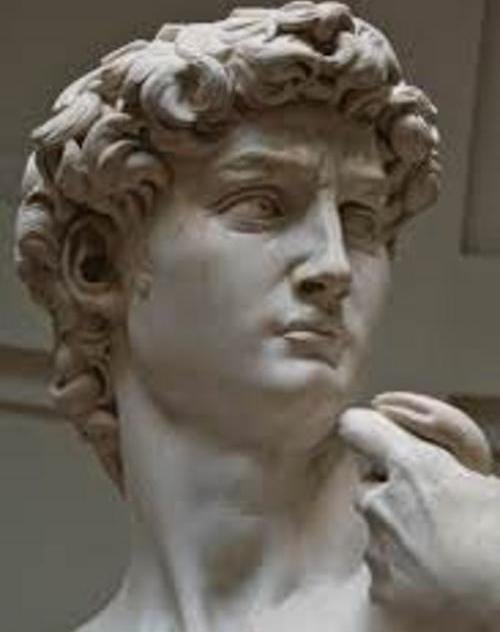
Famous Male Sculptures

Some of these sculptures show us not only the male physicist, his virility, but also the strength, the impetus, that the gods and the common man have. In this series of sculpture we will not differentiate between real and unreal characters, as well as, whether they are gods or simple mortals, we will only make the selection because they are the sculptures of men best known and that you should see before you die, well if you have the opportunity to travel. Let us begin:
The Thinker
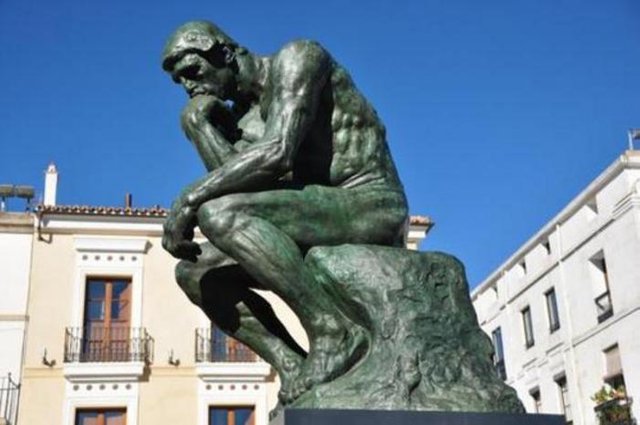

This is one of Auguste Rodin's most famous sculptures. The Impressionist metal sculpture created in 1881 was originally named The Poet because it represented the Italian writer Dante Alighieri, author of the Divine Comedy. The original sculpture of The Thinker is currently in France at the Rodin Museum and measures 71.5 cm high, 58 cm long and 40 cm wide. This sculpture was first exhibited in front of the Pantheon in Paris in 1906, when a period of political and social tensions began. The Thinker would thus become the symbol of the French socialist movement throughout that period. One of the fundamental characteristics of this work and for which it has become famous is the ability to transmit the action of thinking in each muscle, position and gaze, making of this sculpture, The Thinker par excellence.
Discobolo by Mirón
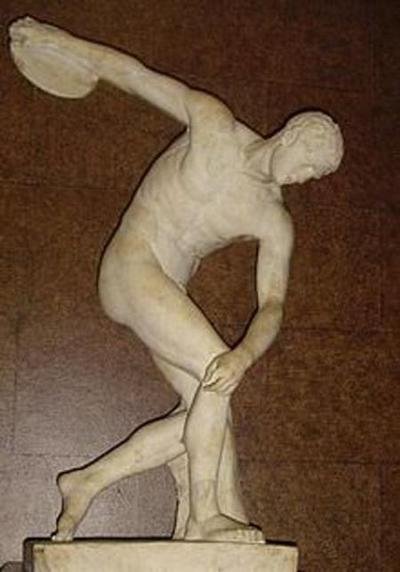

Mirón's Discobolo is the name of a famous Greek sculpture made by Mirón de Eléuteras around 450 B.C. This sculpture represents an athlete in an instant prior to the disc's release and is located in the Museum of the Roman Thermal Baths. The Sport had a great relevance in the life of man as a symbol of independence, democracy and freedom. The discus throwers of ancient times were naked and Mirón represented the moment of the launch with a realism and with a convincing sensation of vigor. The identity of the man who sculpted Mirón is unknown, but it is believed that he was possibly one of the great Olympic athletes of his time. If we look at the sculpture in detail, we will see that despite the physical effort that the man is making in this discipline, the face remains undaunted and for some, Mirón did not know how to transmit emotions in the face; however, others think that it was done on purpose because he was more interested in showing the beauty and harmony of the human body than emotions. For him, first of all, the sculpture had to be beautiful and serene. Like most Greek sculptures, the original no longer exists, but several marble reproductions have been preserved. This piece was made of bronze and measures approximately 1.60 meters high.
Laocoon
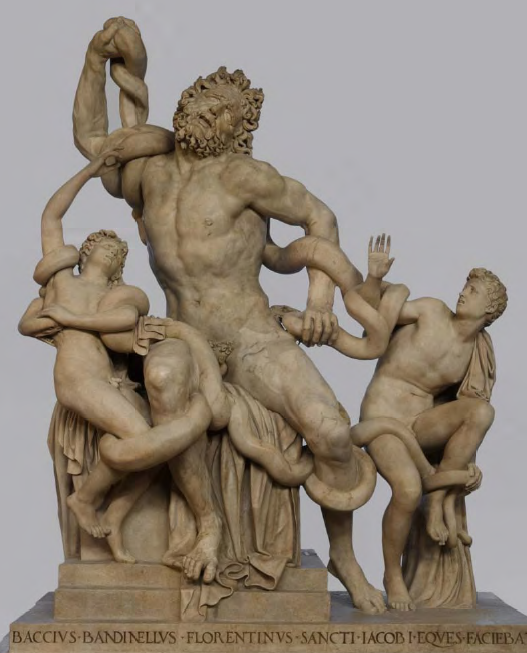

The group of sculptures was discovered in 1506 in the Esquiline in Rome and immediately identified with the Laocoon described by Pliny as the masterpiece of the sculptors of Rhodes: Agesander, Athenodorus and Polidorus. The work is somewhat larger than natural, 2.45 m high and is executed in white marble. It is in the Pio-Clementino Museum belonging to the Vatican Museums of Rome and next to the Torso of Belvedere is the only original Greek antiquarium. We must know that this sculpture represents the death of Laocoonte, who was the Trojan priest of the god Apollo, and opposed the entry of the wooden horse within the walls of the city. For this reason, Athena and Poseidon, favorable to the Greeks, sent from the sea two monstrous snakes that surrounded and suffocated Laocoonte and his two sons. According to another version, Laocoon's death had nothing to do with the wooden horse, but was Apollo's revenge, since his priest, according to this story, had married against the wish of the god. In any case, the misfortune of Laocoon and his sons has been reflected in the sculptural group that can be seen in the Vatican Museum in Rome.
Moses
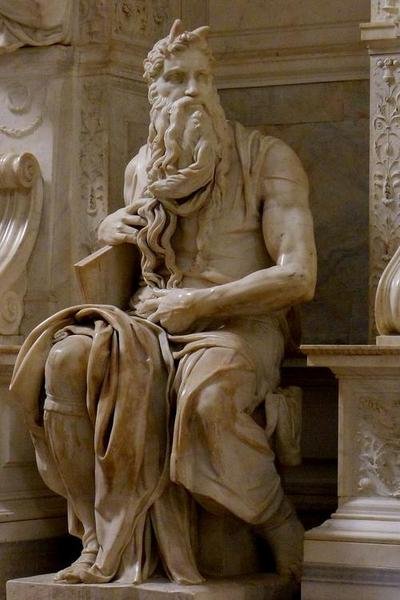

The Moses is a 16th century Renaissance sculpture and is the central figure of the tomb of Pope Julius II, which is located in the church of St. Peter in Víncoli in Rome. It is a white marble statue of Carrara measuring 253 centimeters high, commissioned in 1505, made in 1513-151, and is a work of Michelangelo, centered on the biblical figure of Moses. Despite the character sitting, the body language, the way he holds the ten commandments while playing with his long beard and the sitting position of passivity that contrasts with his expression of action gives the sculpture of Moses a deeper and more human dimension. One of the most striking features of Michelangelo's Moses is the perfect modeling. The anatomical study is of an astonishing naturalism (the arms exhibit the strength and tension of an athlete, despite his mature age). The clothes fall in folds of great naturalism, the muscles are in tension, his face, which contracts in a frowning and fierce gesture, seems the foretaste of the anger that will explode at any moment.
David
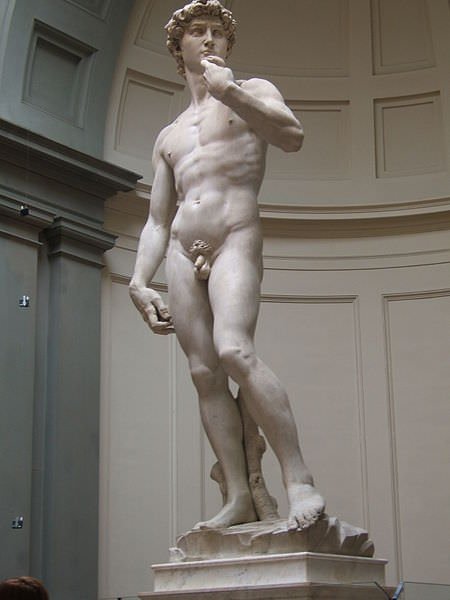

This is another of Michelangelo's great works and one of the most famous. David is a white marble sculpture 5.17 meters high and 5572 kilograms of mass. David represents the biblical David who confronts and defeats the giant Goliath with only a few stones and his intelligence to later become King.
What was originally a religious sculpture took on political connotations, because the Medici had been expelled from Florence and the city had been transformed into a republic, so the David was seen as a symbol of freedom, a work of art that would remind rulers to protect Florence from injustice, as King David had done. In 1873 the sculpture was transferred to the Gallery of the Academy in the Tuscan capital, where it is placed in a way that highlights its greatness in front of the smallness of the spectator.
As we have seen, there are sculptures that impress by their perfection, by their history and by the portentous measures. Most of these masculine sculptures highlight their strongest features: they are full of musculature, are built of heavy materials and show their very marked anatomy. As with Venus, many of these sculptures handle a prototype of beauty that today can still be very valid. The Greek artistic experience in the human body is very intense, rich and current, which makes us suppose the importance of recognizing and admiring these sculptures today and through time.
I hope you enjoyed this brief cultural educational tour as much as I did. I remind you that you can vote for @adsactly as a witness and join our server in discord. Until a next smile.
BIBLIOGRAPHICAL REFERENCES
https://es.wikipedia.org/wiki/El_pensador
https://es.wikipedia.org/wiki/Disc%C3%B3bolo
https://es.wikipedia.org/wiki/Laocoonte
https://es.wikipedia.org/wiki/Mois%C3%A9s_de_Miguel_%C3%81ngel
https://es.wikipedia.org/wiki/David_(Miguel_%C3%81ngel)
Written by @nancybriti
Click on the coin to join our Discord Chat

Witness proposal is here:
Go To Steem Witness Page
In the bottom of the page type: adsactly-witness and press vote.

Use small letters and no "@" sign. Or, click here to vote directly!
Thank you!
A very complete visit to the classic male sculptures, @nancybriti. The Greeks, and then the Romans, were the great artists of this Apollonian art (as Nietzsche called it) that is sculpture. The work of sculpting was perhaps the greatest representation of art as the transforming action of matter through the dedicated and careful intervention of creative work. And this is clearly expressed by the sculptures of these masculine figures in their volumes and forms. Heirs and enrichers of this vision were Michelangelo Buonarroti in the Renaissance and August Rodin in modern times. Thank you for this well presented altarpiece, @nancybriti, and @adsactly for letting us know.
I think this publication is a great opportunity to admire the world's most famous male sculptures. They are all spectacular works of art. There are simpler, simpler, I would say from my point of view, easier like El Discobolo, and others that are really complex and difficult because they are more worked, they show us more details and have more elements like Laocoonte's, this is an extraordinary sculpture, really a masterpiece. It is a great pleasure to read this publication @nancybriti. Thanks to @adsactly for sharing it.
I've always found it impressive that from a stone they can bring out wonderful things. Undoubtedly, the hands of a sculptor or an artist work magic. In each of the sculptures you can see the perfection of the male body, the face. Great.
Sooo cute art...and.. Awesome photography..my dear friend
Photography and art together, it is always good to recognize a good job I loved that series of photographs, my respects and my support, with my vote.
Hi, @adsactly!
You just got a 0.91% upvote from SteemPlus!
To get higher upvotes, earn more SteemPlus Points (SPP). On your Steemit wallet, check your SPP balance and click on "How to earn SPP?" to find out all the ways to earn.
If you're not using SteemPlus yet, please check our last posts in here to see the many ways in which SteemPlus can improve your Steem experience on Steemit and Busy.